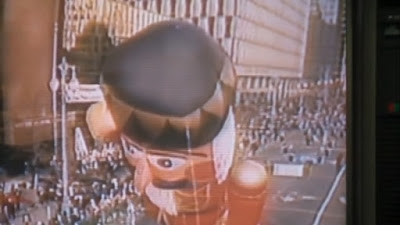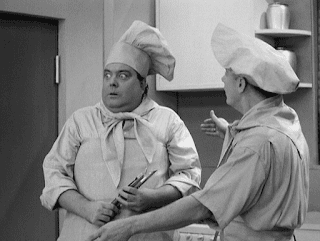Over the years here at YesterYear, I've made it a tradition to cover something specifically 'Elvira' for the Halloween season, and this year is no different. In the past, we've covered Elvira's Haunted Hills (2019), Fox's Halloween Bash with Elvira and George Carlin (2020), How Elvira Helped Coors Become the Official Beer of Halloween (2021), Go Psycho with Elvira and Pepsi (2022), and Elvira's Top Five Guest Appearances (2023).
This year, we'll cover the television program from the early 80s that made her famous: Elvira's Movie Macabre.
For the uninitiated, Elvira is a character portrayed by Cassandra Peterson. Born in September 1951, she worked with the legendary Los Angeles comedy troupe The Groundlings during the 70s and 80s. In 1981, she created the Elvira character for the television show (and the topic of today's discussion), Elvira's Movie Macabre.
The popularity she gained from Elvira's Movie Macabre led to the 1988 film Elvira: Mistress of the Dark and later the 2001 "sequel," Elvira's Haunted Hills. She's also made cameos in several other films and television programs, including a memorable appearance as the guest commentator during Wrestlemania 2. If you'd like to learn more about Elvira, the person, and the character, you can check out my other articles for a more detailed background.
In 1981, producers at KHL-TV in Los Angeles decided to revive an old show, "Fright Night," that had previously starred Sinister Seymour (Larry Vincent) that had run successfully from 1969 to 1974. Fright Night aired public domain and low budget schlocky horror films with vignettes of Sinister Seymour introducing each film. The show was canceled when Vincent fell ill, and he passed away a year later.
Originally, the producers of KHJ-TV in Los Angeles asked 1950s horror hostess Maila Nurmi to revive her old show, The Vampira Show. Nurmi had briefly hosted The Vampira Show from 1954 to 1955 on KABC-TV in Los Angeles. When KABC canceled the show, Maila took her show to the competition KHJ-TV, where it only lasted a few months before being canceled a second time.
Nurmi had claimed that Vampira's image was "borrowed" from Morticia Addams, who, during the mid-50s when The Vampira Show aired, was a character in Charles Addam's cartoons in The New Yorker magazine. The Addams Family wouldn't hit television airwaves until ten years later, in 1964.
Nurmi, now in her 60s, was not up to the task of performing as Vampira again, so producers worked out a deal that, for allowing the use of her character's name, the station would give her an executive producer credit and a weekly royalty check from the show.
Nurmi agreed and recommended they hire Lola Falana to become the "daughter of Vampira." Lola Falana was an African American singer, dancer, and actress from Camden, New Jersey, who had become famous in Italy for spaghetti westerns. Falana frequently appeared on The Joey Bishop Show and other variety series but had little experience in the horror genre.
Producers opted to not use her, and instead sent out a casting call, which Peterson answered.
In a 2021 interview with LitHub.Com, Peterson says she met with Nurmi during her first audition. She describes the meeting with show director Larry Thomas, the station manager Chuck Velona, the program director Walt Baker, and Vampira (Maila Nurmi) as a pleasant meet-and-greet. There, they told her the role would be playing Vampira's daughter on a new horror film show.
Peterson claims she had never heard of Vampira because the show only aired in Los Angeles when she was a child living in the Midwest. Coincidentally, Peterson and Nurmi had a lot in common, including working as showgirls, modeling for men's magazines, and even working as hat-check girls during their younger years.
Peterson admitted that "Vampira had once been a very statuesque and beautiful woman; it was also clear that she'd lived a very hard life. She had only a tooth or two left in her head, and she rambled on incoherently about subjects that didn't relate at all to what we were there to discuss. She talked a lot about her relationship with James Dean, but in the present tense, as if it was ongoing."
Dean was long dead at the time.
After the meeting went well, Cassandra and her best friend, Robert Redding, drew up ideas for her new role. Redding, a talented artist, originally created a look similar to Sharaon Tate's character in "The Fearless Vampire Killers." In the LitHub interview, she described the look would have utilized her own long red hair, matched with a pale pink tattered wedding gown with lots of "dead-girl" makeup.
 |
| Sharon Tate in "The Fearless Vampire Killers" |
KHJ management immediately shut the idea down, demanding it be "all black."
Redding, left with a basic black female vampire look to work with, was able to put an edgier 1980s spin on the character. He drew inspiration from Kabuki theater books for the pale-faced makeup and gave Elvira a hairstyle similar to that of his favorite singer, Ronnie Spector (of The Ronettes). A Ronnie-inspired beehive with long black hair beneath soon became Peterson's trademark look.
Of course, there was the skin-tight dress and plunging neckline, too. It was a neckline that would make Peterson famous. Peterson recalls the only comments on her wardrobe from the network was to make the slit on the leg "a little higher."
When Maila Nurmi found out they had hired someone as Vampira without her input, specifically a comedic actress like Peterson, she quit in protest.
Work began developing the show, but on the morning of the first taping, Cassandra Peterson remembers Walt Baker running into the studio and screaming, "STOP THE SHOW!"
Maila Nurmi's attorney had called and sent official letters seeking a cease-and-desist order on the show for using the Vampira name and likeness without her permission. According to Peterson, the "fake spiderwebs were already blown into place and ready to go." Just as the crew began taking down the set, show director Larry Thomas called for a new character name just to get the show going.
Thomas put a bunch of names in a coffee can and selected one at random. Everyone on the set, from Peterson down to the catering crew, threw suggestions into the can. When everyone was done, Peterson pulled out the name that would eventually take her to superstardom.
"Elvira."
Peterson was crestfallen. With thoughts of the Oakridge Boys song "Elvira" in her head, she worried it sounded too much like a country-western singer.
In Hollywood, though, the show must go on, and they began filming the introduction to the show and the first few episodes.
On September 26, 1981, when Cassandra Peterson was just days away from turning 30, Elvira's Movie Macabre debuted on televisions in and around Los Angeles. Running every Saturday night at midnight and repeating Sunday afternoons as an alternative to football, the first show featured the 1972 schlock horror film Grave of the Vampire.
Immediately, positive comments flooded the network and even directly into Cassandra's home. She was so unaccustomed to fame that she still had her address and phone number listed in the phone book and received numerous calls from men who enjoyed her appearance on the show and, of course, her appearance in a low-cut dress.
The character, Elvira, would eventually evolve from a popular local figure to a lucrative worldwide brand, selling costumes, comic books, action figures, trading cards, and much more. Her popularity peaked around 1988 and 1989, when she wrote and starred in a full-length film, "Elvira: Mistress of the Dark," and appeared as the spokesperson for the Coors beer company.
The show itself was a simple process. Elvira's Movie Macabre would feature low-budget "B" movies, particularly horror and sci-fi. The movie would start after a brief introduction by Elvira and, during commercial breaks, would often feature short interstitials with jokes, commentary, and phony phone calls from a character called "The Breather," played by Peterson's personal friend John Paragon.
After the show's popularity began to take off, Maila Nurmi filed a lawsuit against Peterson, the show, and the network. She claimed that the show stole her likeness as Vampira. Admittedly, both wore tight black dresses, had black hair, and used liberal amounts of makeup. Even Elvira's closing line, "Unpleasant dreams," was notably similar to Vampira's "Bad dreams, darlings."
The court ruled in Peterson's favor, deciding that there was a resemblance but not one close enough for legal action. The court ruled that "'likeness' means an actual representation of another person's appearance, not simply a close resemblance."
Throughout most of the series, Elvira's comedic scenes were often better than the films. Like anything, some films are better than others. For a special event in 1982, the show aired a 3-D film titled "The Mad Magician." The network sold over 2 million pairs of 3-D glasses (for 0.99 cents) to interested viewers.
According to ScreenRant.Com, these are the five best films shown on Elvira's Movie Macabre:
5. "Let's Scare Jessica to Death" (1971)
4. "Dracula" (1974)
3. "House of Usher" (1960)
2. "Village of the Damned" (1960)
1. "Witchfinder General" (1968)
All good things must come to an end, and Elvira's Movie Macabre was no exception. Despite its regional success, in 1986, it was canceled after 5 seasons and 140 episodes. Peterson tells a humorous story in her memoir that when the original show ended, she requested to purchase the famous red sofa from the show. It was only when she asked for it that the network realized they had been paying a monthly prop rental fee for the entire run on the show. A $200 sofa cost them over $20,000!
Even though the show ended, it was far from the end for Elvira and the Movie Macabre franchise.
In 2010, the show was revived on "This TV" as Elvira's Movie Macabre, where she would play films available in the public domain. This version of the show lasted only a year after filming 26 episodes. Only 20 episodes were ever shown, but the final 6 episodes were eventually added to iTunes and the DVD box set.
In 2014, a show with a similar format, "13 Nights of Elvira," was produced for Hulu. The series was produced in partnership with Full Moon Pictures, which provided the bulk of the films. The show aired a new episode each night between October 19 and Halloween. It was not renewed after the first season.
In 2021, Elvira revived her character and the Movie Macabre series again to produce "Elvira's 40th Anniversary, Very Scary, Very Special Special." The special aired on the Shudder network in September 2021 to coincide with the release of her memoir, "Your's Cruelly, Elvira."
Going back a bit, in 2004, Time Life released a series of special Elvira DVDs titled Elvira's Horror Classics in the vein of Movie Macabre. The series included seven films, and later, a three-DVD box set titled Elvira's Box of Horrors was released.
Elvira's Movie Macabre was exceedingly popular in the Los Angeles area, but the Elvira character didn't have much name recognition nationwide. When she became the spokesperson for Coors beer, she quickly became a household name. Coor's named itself "The Official Beer of Halloween," and using Elvira as their new mascot, soared to new heights. Elvira appeared in several commercials, and nearly every major beer retailer in the U.S. had her image in cardboard cutouts and advertisements.
Her popularity in Movie Macabre and with the Coors advertising campaign led to a feature film, "Elvira: Mistress of the Dark," released in 1988. She brought the character back to self-produce the 2001 film Elvira's Haunted Hills.
Several years after the original Macabre series ended, Peterson began shopping a sitcom based on the character to major networks. A pilot episode was filmed for CBS, featuring Elvira as a love potion saleswoman and fortune teller living in Kansas with her relatives. The show wasn't picked up for syndication but is currently available online.
You can read about her pilot episode for The Elvira Show and her other guest appearances HERE on Elvira's Top 5 Guest Appearances.
In 1982, based on the success of Movie Macabre, the Los Angeles area theme park Knott's Berry Farm hired Elvira to become the new host of the annual Halloween Haunt promotion during the month of October. Elvira would appear on stage nightly at the park with a Halloween-themed musical comedy revue. She would appear during the annual Halloween festival, now known simply as Knott's Scary Farm, nearly every year until 2001, when both sides mutually agreed the show had run its course.
Elvira returned to Knott's in 2013 with a new show written by her old friend (and part-time writer) from Movie Macabre, John Paragon. In 2016, Elvira retired from the theme park again after celebrating her 35th anniversary with Knott's Berry Farm.
In recent years, the Elvira character has taken a backseat to the real-life woman behind the beehive wig. Cassandra Peterson began making more and more appearances as herself, especially to promote her memoir. I read it, and even if you are a slight fan of hers, it's worth your time.
In the summer of 2024, it was announced Elvira would return to Knott's for three appearances during the Halloween season.
The Elvira character rapidly gained notoriety with her tight-fitting, low-cut, cleavage-displaying gown. Her flippant "Valley Girl" attitude brought a satirical and sarcastic edge to the commentary on low-budget horror films. She reveled in dropping risque jokes and double entendres and made several self-deprecating jokes about her own cleavage.
Her campy sex appeal and good-natured self-mockery made her famous with late-night horror fans, and her popularity as Elvira today is a testament to Cassandra Peterson's strengths as a comedian and dedication to the character.
Peterson once joked that she figured out, "Elvira was me when I was a teenager. She's a spastic girl. I just say what I feel, and people seem to enjoy it."












.png)




Comments